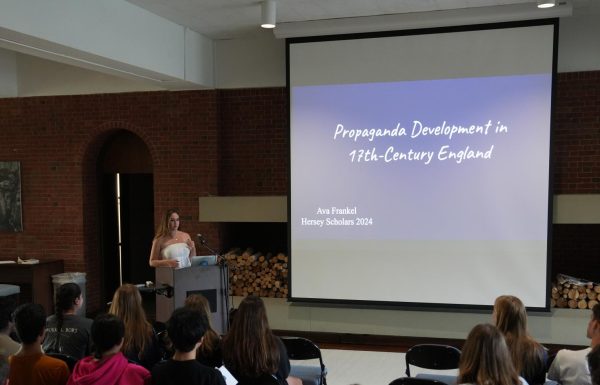The Betrayal of Brown v. Board: School Segregation Today
Americans today rarely recognize the extent to which racism has affected all of our lives. To many, issues such as school segregation and Civil Rights seems to have long been resolved. We stroke our egos, chiding others for racist or discriminatory behavior without ever truly examining our own participation in institutional racism.
School segregation persists and has even resurged to levels found in 1960s America. What makes these trends truly alarming is how overlooked they are – at least during the 1960s, segregation was a major issue and in the public eye. However, now it is an issue seldom discussed.
Due to our complacency and pride, we have allowed discriminatory practices to proliferate in American society. In order to ensure a more equal and diverse America, we must hold ourselves accountable for our own complicity in the mistakes of the past and work to correct these mistakes.
The major victory in the fight for desegregation, the landmark Brown v. Board of Education (1954) Supreme Court ruling abolished de jure segregation. A series of further rulings reinforced Brown and expanded integrative policies. However, progress was soon stalled. Milliken v. Bradley (1974) was the first major relapse in the school desegregation battle – it dismantled Brown’s power and protected policies that led to the resurgence of school segregation. We cannot allow the efforts of millions of Americans in the fight for civil justice be wasted; we must ensure that mistakes of the past, such as Milliken v. Bradley (1974), are not be repeated.
In 1970s Detroit, blacks were systematically confined to the poorest neighborhoods by discriminatory housing policies and racist lending practices. These practices created and maintained racially divided residential areas; as a result, school districts were likewise divided along color lines. To remedy this, the Detroit Board of Education proposed what became known as the “April 7” plan, which involved a modest busing program between selected school districts. However, fierce resistance from white neighborhoods convinced Governor William Milliken to jettison the Board’s plan.
In response, black families and members of the NAACP filed a class-action suit against Governor Milliken and prominent officials of the Michigan State Education department. They argued that Governor Milliken and his fellow officials had violated Brown by promoting segregation through indirect means, a practice known as de facto segregation. Federal District Judge Stephen Roth ruled in favor of the plaintiffs and ordered the immediate implementation of an integrative busing system for the entire Detroit metropolitan area. However, the conservative majority in the Supreme Court struck down Judge Roth’s ruling 5-4, arguing that, while Gov. Milliken and his appointees may have promoted de facto segregation within inner city Detroit, any integration plans should be limited to the area of violation and that, therefore, the white suburbs should not be affected by desegregation plans. The Supreme Court ruling in Milliken v. Bradley (1974) protected racist practices and represents one of the worst mistakes of the high Court in the battle for Civil Rights.
Prior to Milliken, blacks fled to major cities across the nation in search of social mobility and safety from violence. However, they faced major challenges in discriminatory housing and lending policies. Since white real estate agents systematically kept them out of single-family homes, blacks could only turn to overpriced apartments. Predatory landlords forced them to spend significantly more money than their white counterparts on housing, exacerbating blacks’ precarious finances. That bankers rarely loaned to blacks only contributed to their financial woes. In fact, banks were encouraged not to lend to black homebuyers by federal appraisal practices, which deemed black neighborhoods too risky for loans and subsidies. Indeed, these practices created the phenomenon of “white flight”; whenever a rare black family moved into a white neighborhood, white Americans often fled in fear of loss of property value. Whites settled instead in the outlying school districts of the Detroit metropolis. Treated like some sort of fatal disease, blacks were quarantined to the inner city of Detroit.
When Milliken v. Bradley (1974) struck down previous court orders for integrative busing, the Supreme Court not only protected these despicable practices but also further entrenched them into society. As the poverty cycle created by these practices worsened, and impoverished blacks grew increasingly poor, their decaying inner-city neighborhoods reinforced whites’ and city officials’ negative image of blacks. Furthermore, as black property values declined, the shrinking tax base lowered funding for local schools. The funding discrepancy between black and whites exacerbated the poverty cycle and further contributed to segregation. Ravaged by these racist policies, Detroit desperately needed a more comprehensive desegregation plan. However, the Milliken decision crushed that dream.
Many Americans continue to reap the benefits of the discriminatory policies Milliken protected. Detroit remains highly segregated; while only making up 22% of the entire Detroit metropolis, blacks make up 80% of the inner city. Furthermore, school funding disparities favor the outlying predominantly white school districts. At Bloomfield Hills, an outer Detroit school district which is 92% white, schools have around $13,000 per student; in urban Detroit, which is 95% black/Hispanic, schools have only $9,500 per student. This funding discrepancy is not limited to Detroit; other cities mirror the gap, some reaching as high as a $10,000 disparity.
Milliken v. Bradley (1974) was undoubtedly one of the Supreme Court’s worst decisions, and the ruling laid the framework for persistent school segregation. However, that these alarming trends have gone unnoticed in the public eye highlights our complacency as a nation with the violations of the past. We must acknowledge our participation in institutional racism, regardless of how difficult or shameful it is. We must hold ourselves accountable and remain mindful of racial inequity. The tendrils of racism continue to have a tight grip on society; if we dream of a more equal and diverse America, we must come to terms with its legacy and influence on our daily lives.
Contact Michael Zhang at
[email protected]












